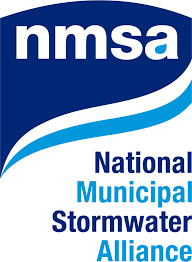The Future of Street Sweeping in Stormwater Management |
|
by Ranger Kidwell-Ross 
In the summer of 2025, in his capacity as heading the largest information resource on the planet about power sweeping, WorldSweeper's Editor will be designing and administering a street sweeper testing process. This will be done along with noted sweeper testing pro, Roger Sutherland. The test will be done via a collaboration with, funds provided by, Sea Grant/NOAA and the City of Santa Barbara. A key component of the concern that will be tested is removal of microplastics. What the sweeper test will be comprised of and where the test results will reside is currently under evaluation.
There's no question that street sweeping plays a critical role in stormwater management and pollution control. However, that role is not widely recognized throughout the U.S. community of stormwater professionals. If controlling pavement-based runoff pollutants are to be managed in the best way possible, that has to change. Recent studies in Minnesota and Florida, for example, have shown street sweeping to be five-to-seven times more cost-effective for the removal of nitrogen and phosphorus than the next best method, which involves catch basins. A recent study for the City of Los Angeles, conducted by Larry Walker and Associates, tested an Elgin Broom Bear mechanical broom sweeper and Elgin's RegenX regenerative air model. The Broom Bear picked up only 35% of the material laid down in the test; the RegenX picked up 75%. A recent study of regenerative air sweeper pickup by Toronto, Canada, found a 77% pickup rate. Quite a difference, but unfortunately the Minnesota and Florida tests didn't separate out broom sweeper results from air sweeper results in their own testing processes and resulting data. That means the relative cost-effectiveness of street sweeping when it comes to pollutant removal – and is done by regenerative air and, perhaps, vacuum sweepers – is likely much higher than the Florida and Minnesota tests indicated. Exploration of NMSA Hosting Street Sweeper Testing Results for Stormwater Community
In the Zoomcast I provide more information on the recent studies showing street sweeping to be five-to-seven times more cost-effective than catch basin cleaning for removing pollutants like nitrogen and phosphorus. I also outline and emphasize the need for a standardized testing process for street sweepers to provide reliable data to the stormwater community, as well as to other heavy-duty sweeper buyers. Given the above data that are already known, we also discussed the importance of differentiating between mechanical broom sweepers and the more regenerative air or vacuum sweepers that have been shown to have a better removal ability for smaller-micron debris. The conversation touched on the concept of "enhanced street sweeping," which includes a number of aspects, most important being the removal of parked vehicles during sweeping operations. New technologies, such as phone alerts and camera systems on sweepers, can also now facilitate this process and reduce costs while furthering the ability of sweepers to provide more aspects of city needs as well as improve overall effectiveness. Brown introduced NMSA's STEPP (Stormwater Testing and Evaluation for Products and Practices) program, which aims to provide trusted and verified information on stormwater infrastructure performance. While STEPP currently focuses on other technologies, both of us saw potential for incorporating street sweeping into the program. One possibility is via creating a new NMSA Center of Excellence dedicated to street sweeping research and evaluation. The discussion highlighted the need for better data to inform regulatory credits for street sweeping programs. Currently, some states like Florida and Minnesota are developing credit systems, but there's a lack of differentiation between sweeper types and their effectiveness. The currently planned testing process will provide pickup data that include how much each sweeper picked up at each of the particle sizes included in the test. Since it has been documented that only about 10% of the material on a typical city street is 250 microns in size or less (for comparison, human hair is about 75 microns wide) but that 10% fraction may contain up to 60% of the total pollutant load on the street. Brown and I also discussed in the Zoomcast the importance of considering factors such as sweeping frequency, climate, and local conditions when designing effective street sweeping programs. We also touched on the potential for street sweeping to address emerging concerns like microplastics and tire wear particles. Microplastics, including tire wear particles, are becoming an enormous problem when they run off into waterways and/or wind puts the particles into the air where they can enter human lungs. The microplastics problem is a central driver of the Sea Grant effort, although since California also has a trash removal initiative the test will likely include some variety of other, larger, material. The conversation concluded with a call for collaboration between the street sweeping industry, stormwater management professionals, and researchers to develop standardized testing methods and share best practices. This cooperation could lead to more effective stormwater management strategies and improved water quality in urban areas.
Click on the image below to access the @ one-hour Zoomcast in its entirety. Note that as part of this exploration of the collaboration benefits between the sweeping industry and stormwater professionals, we also developed these two PDF files:
WorldSweeper offers an award-winning free e-newsletter packed with a variety of information about the power sweeping industry. This includes links to studies and reports, among many other topics. If you do not currently receive the newsletter, use this signup link.
|
© 2005 - 2024 World Sweeper
|
Street Contents
|